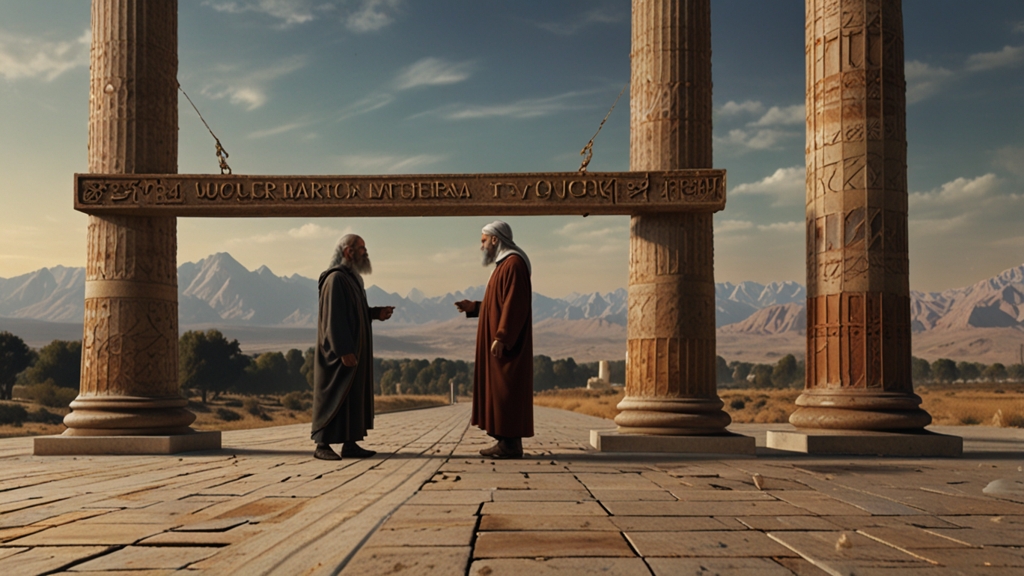Exodus and Integration: Bridging Cultures and Communities
Human history is replete with tales of migration and exodus. From the nomadic tribes of ancient times to the modern movement of refugees and immigrants, the relocation of populations has been both a challenge and an opportunity. While the reasons behind such movements are varied, ranging from conflicts to economic pursuits, the consequences on the cultures and communities involved are profound.
The Waves of Migration
Significant migrations have occurred throughout history, often spurred by difficult conditions in the homeland. The Irish Potato Famine in the mid-19th century led to massive waves of Irish immigration to the United States. Similarly, the turmoil in Europe during and after World War II saw vast numbers of people seeking new lives in distant lands.
The mass migrations of history have always been dual-edged swords, bringing both disruption and opportunity. While the original communities might have faced upheaval, the destination communities often underwent significant cultural enrichment and diversification.
Cultural Integration: A Two-Way Street
When people from different backgrounds come together, the process of cultural integration is inevitable. This is not merely a one-sided absorption of the migrant's culture into the existing fabric but a blending that can transform both groups. For instance, the influx of Asian communities into Western countries has enriched local cuisines, festive celebrations, and even languages.
However, successful integration is contingent upon mutual respect and open-mindedness. Host communities need to foster an environment of inclusion, while migrants should be willing to adapt to new cultural norms. When done correctly, this integration leads to fortified, vibrant communities where diversity is celebrated.
Integration is not about losing one's identity but about enriching it by embracing new influences while contributing one's own unique attributes to the collective whole.
Challenges and Opportunities
While the advantages of cultural integration are manifold, the challenges cannot be ignored. Migrants often face language barriers, economic hardships, and social exclusion. Moreover, host communities might struggle with the changes brought by new customs and the initial strain on resources.
Despite these challenges, the benefits of cultural exchange and integration often outweigh the downsides. Educational systems, for example, get enriched by diverse perspectives. Economies benefit from the skills and labor that migrants bring in. Even social systems evolve to become more inclusive and resilient.
Strategies for Effective Integration
To ensure that the process of integration is as smooth as possible, several strategies can be employed:
- Language and Education: Offering language courses and educational programs can help migrants better adapt to their new environment.
- Community Engagement: Encouraging participation in community activities can foster mutual understanding and respect.
- Economic Support: Providing job opportunities and financial support can ease the transition for newcomers.
- Legal Frameworks: Establishing policies that protect the rights of migrants ensures fair treatment and equal opportunities.
Governments, NGOs, and community organizations have essential roles in implementing these strategies. Their efforts can help turn potential areas of friction into points of unity and cooperation.
When communities open their doors and minds to newcomers, they lay the groundwork for a society enriched by a multitude of voices, perspectives, and talents.
The Future of Integration
As globalization continues to bring different cultures into closer contact, the challenge of exodus and integration will remain a relevant issue. Ignoring this process can lead to societal rifts, but embracing it can result in unprecedented cultural, economic, and social growth. The future, therefore, lies in understanding that humanity's strength is amplified through unity and the blending of diverse cultures.
As we move forward, the stories of those who traverse borders in search of better lives will continue to shape our collective destiny. By focusing on effective integration and celebrating our shared humanity, we can build communities that are not only resilient but also rich in culture and empathy.







